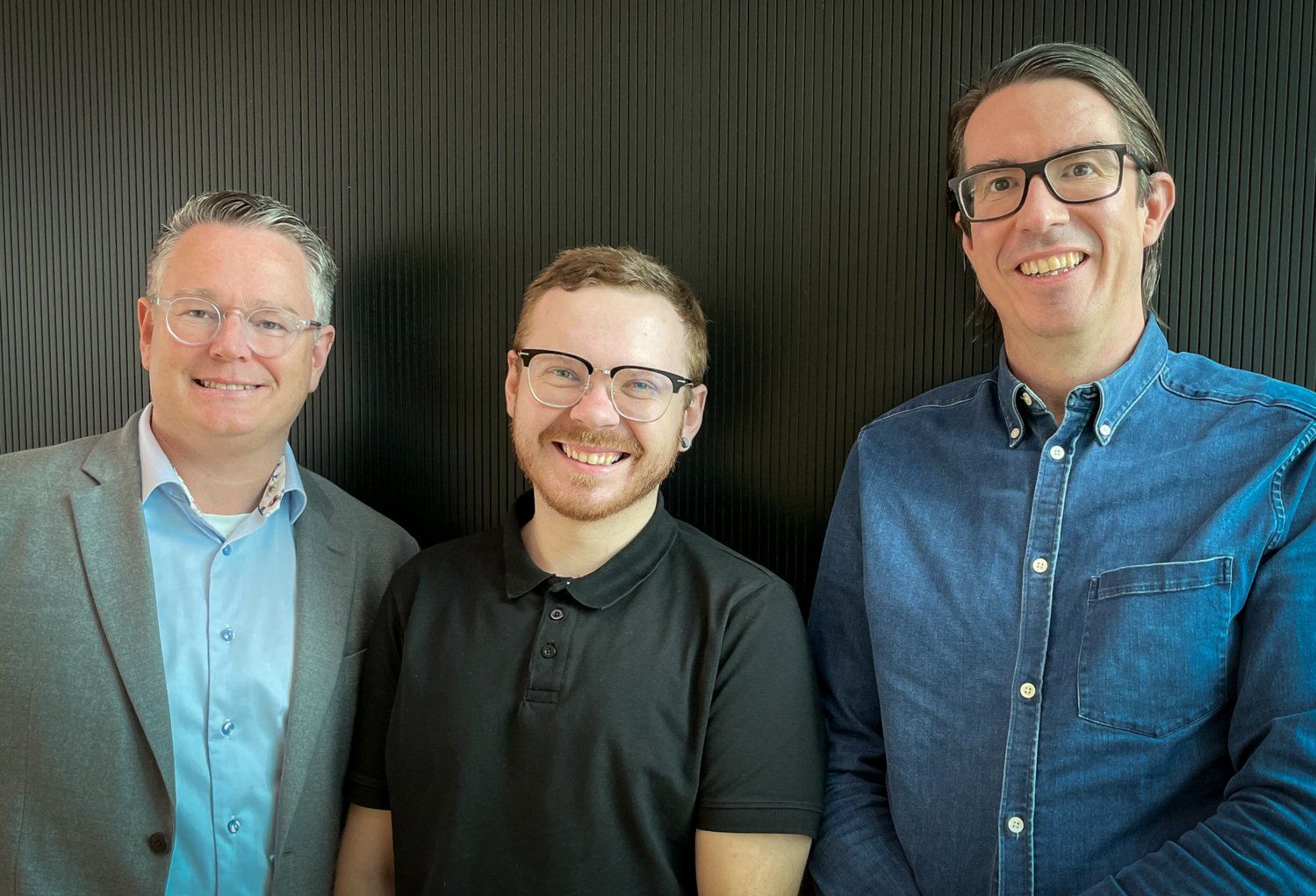Novel insights into chronic lymphocytic leukemia

RNA-sequencing has become a cornerstone in the study of gene expression, offering insights beyond mere mRNA transcript abundances. One area of increasing interest is alternative splicing, a process that allows a single gene to produce multiple transcript variants and thus protein isoforms with potentially different functions. In chronic lymphocytic leukemia (CLL), mutations in the splicing factor gene SF3B1 are well-documented, yet broader implications of SF3B1 mutations are underexplored.
Functional impact of SF3B1 mutations on the ncBAF chromatin remodeling complex through altered splicing
In a new study recently published in Leukemia, researchers from the Clinical Genetics research group at the Department of Molecular Medicine and Surgery conducted an in-depth analysis of SF3B1 mutations in CLL. The team, led by Dr. Richard Rosenquist Brandell, Professor of Clinical Genetics, focused on a specific subgroup of patients with CLL - those with a clinically aggressive form of the disease where SF3B1 mutations are found in up to 50%. Utilizing RNA-sequencing of samples from 35 patients, the team identified significant splicing events associated with these mutations, revealing multiple splicing events affecting the non-canonical BAF (ncBAF) chromatin remodeling complex, an important epigenetic regulator that controls the accessibility of DNA and influences gene expression by altering chromatin structure. This included splicing events in the ncBAF complex subunit BRD9 and eight additional ncBAF interactors. The findings were further validated through long-read RNA-sequencing and extended RNA-sequencing analysis of samples from 139 patients with CLL, solidifying the association between SF3B1 mutations and these splicing events.
Key findings: The role of BRD9 in CLL
This study is particularly notable for its emphasis on the ncBAF complex, an area that has so far received limited attention in CLL research. One of the study's most intriguing findings is the identification of an alternative BRD9 splice variant that produced a protein isoform with an altered C-terminal structure. This isoform exhibited enhanced interaction with the ncBAF complex while showing reduced binding to other important proteins including SPEN, BRCA2, and CHD9.
“This is a significant step forward in our understanding of CLL pathobiology,” explained Dr. Rosenquist Brandell. “SF3B1 mutations have long been linked to poor prognosis in CLL. Our study highlights a novel pathobiological mechanism by which the spliceosome dysregulation caused by SF3B1 mutations alters the ncBAF complex’s interaction network, potentially contributing to the aggressive nature of SF3B1-mutated CLL.”
Research highlights the need for advanced splicing tools
The study also highlights the importance of alternative splicing in cancer research. Blaz Oder, a PhD student and joint first author, noted, “Most RNA-sequencing studies in CLL focus predominantly on gene expression changes, but our work demonstrates the importance of alternative splicing - a dimension often overlooked but important in cancer biology, especially in the context of splicing factor mutations like SF3B1.”
The discovery of these splicing events underscores the need for more specialized research tools to study alternative splicing in cancer. “To fully understand complex diseases like CLL, we need to develop disease-specific splicing databases and expand public datasets to include the splicing dimension,” said Dr. Daniel Hägerstrand, joint first author of the study. “Our work, which also utilized publicly available datasets, underscores the potential in already published data and the importance of further exploring these valuable resources.”
Implications for future CLL research
The team's findings have important implications for future research, particularly highlighting the specific role of BRD9 in CLL. The discovery of the novel BRD9 isoform and the altered interactions of the ncBAF chromatin remodeling complex suggest that BRD9 could be a potential therapeutic target for SF3B1-mutated CLL. The ncBAF complex, and BRD9 in particular, is currently being investigated as a therapeutic target in several early clinical trials for other cancer types. The study demonstrated that BRD9 depletion sensitizes both cell lines and primary CLL cells, though further investigation is needed to better understand the therapeutic potential and how best to leverage these findings. More broadly, the research emphasizes the significance of SF3B1 mutations in the aggressive behavior of CLL and draws attention to the importance of alternative splicing in cancer biology more generally.
Support and acknowledgments
The study was primarily supported by the Swedish Cancer Society, the Swedish Research Council, Region Stockholm, and Radiumhemmets Forskningsfonder, among other contributors.
The authors acknowledge all current and former members of our research groups who contributed to the collection of samples and data used in this study. Sequencing was performed by the SNP&SEQ Technology Platform in Uppsala, part of NGI Sweden and Science for Life Laboratory, with support from the Swedish Research Council and the Knut and Alice Wallenberg Foundation. Computational resources were provided by NAISS (https:/naiss.se formerly SNIC) UPPMAX, partially funded by the Swedish Research Council.
Publication
The non-canonical BAF chromatin remodeling complex is a novel target of spliceosome dysregulation in SF3B1-mutated chronic lymphocytic leukemia. Daniel Hägerstrand, Blaž Oder, Diego Cortese, Ying Qu, Amrei Binzer-Panchal, Cecilia Österholm, Teresa Del Peso Santos, Leily Rabbani, Hassan Foroughi Asl, Aron Skaftason, Viktor Ljungström, August Lundholm, Maria Koutroumani, Zahra Haider, Cecilia Jylhä, John Mollstedt, Larry Mansouri, Karla Plevova, Andreas Agathangelidis, Lydia Scarfò, Marine Armand, Alice F. Muggen, Neil E. Kay, Tait Shanafelt, Davide Rossi, Lukas M. Orre, Sarka Pospisilova, Konstantin Barylyuk, Frederic Davi, Mattias Vesterlund, Anton W. Langerak, Janne Lehtiö, Paolo Ghia, Kostas Stamatopoulos, Lesley-Ann Sutton & Richard Rosenquist. Leukemia (2024). https://doi.org/10.1038/s41375-024-02379-4
